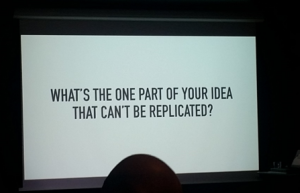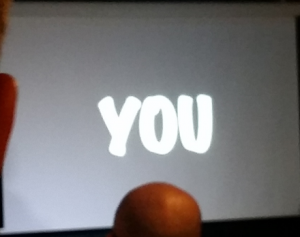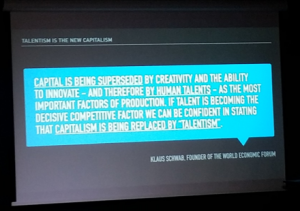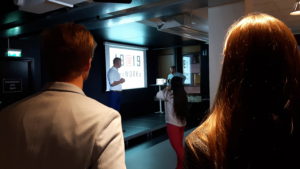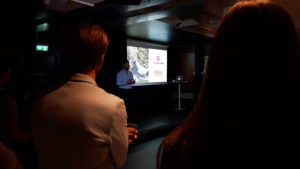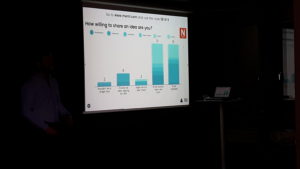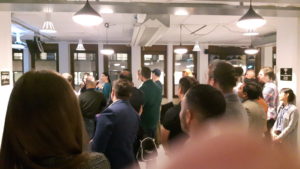When I started my studies, I sincerely believed I could prove the world wrong on this common consensus: that it’s impossible to do many things at the same time, without compromising in quality. Naive as I was, I have been taking on project after project, never saying “no” to an opportunity when I thought it would contribute to either my personal or career development. Now, three years later, I find myself struggling to fit everything I want to do in a day and rarely, if ever manage to achieve that level of satisfaction I imagined years ago.
These difficulties can actually be attributed to a number of bad habits. Of course I am a perfectionist and a procrastinator (duh, cliche). But these habits of the mind can be countered if one knows to use the right tools. Last week, I got some valuable new insights to help with this during a lunch lecture called Great Habits, Great Students. In this lecture, Björn Liljeqvist shared a clever, three phase learning strategy that should make you a better student, a better entrepreneur – heck, maybe even a better human being if you gave it the chance. Although his talk was aimed primarily at studying, I think these lessons can be useful in every aspect of our daily lives and am therefor sharing them with you in this post.
The key three phases of his model are Before, During & After, words connected to a set of habits that will help you to study, work and live a much more efficient life.
Before you start your day at work, at school, or whatever you do, prepare yourself (± 20 minutes). There are two things you should to do: make a planning for today or the days to come and prepare yourself for class. You can do that by looking at the literature before going to your lectures that day, by looking at old exams, googling the subject or by just going through your agenda if its not a day at school. Think of it as planting a seed: it will help you to relate better to whatever is happening during the day.
A typical example of what happens if you don’t do this is when the lecturer introduces a new and difficult topic: people who didn’t prepare will be caught off guard and you will hear questions like these: “Is this topic going to be on the test? Do I really have to know all this?”. Coming to lectures prepared will give you the peace of mind to really take in what is being told and it’s been proven that people learn much better when they are not stressing all over.
During your day there are often millions of little distractions that keep you from doing the things you set out to do. Don’t worry, we all have it and it is a very human thing. A clever way to deal with this problem, helping you to learn, work and live more efficiently is to use the Timebox Technique. It is as simple as it sounds: set a certain time for yourself to work on a project (e.g. 25 minutes) and say a loud and clear NO to everything distracting you. I find this very useful, as it helps me to distinct between all my everyday tasks and spread them throughout the day! The key to success here is to have a lot of short sessions, not one long session.
“Studying is like personal hygiene; it doesn’t depend on how long you shower, but on how frequent you do it.”
As long as you are consciously working on achieving these timed sessions you should be fine. To help you with this, at the end of this post you can find a set of good tools and links for you to try out when implementing this in your life!
If After a day of hard work you finally sit down for a rest, take your time to reflect on what you learned. Or even better: talk about it! Because only when you express the knowledge you gained in your own words, it really settles in your brain. Take another look at your notes, or try to solve that difficult exercise explained in class on your own. Crucial here is to do this reflecting the very same day, as your brain has a “big reset button” that gets pushed every night when you go to sleep. You might remember it the next day, or maybe the day thereafter, but if you don’t actively readdress your gained knowledge you can count on forgetting it sooner or later.
A good way of doing this in a systematic way is to use a Study Journal. Quite obviously, this is a little booklet or document in which you write down everything you learned today, every day. Here-within you put three page markers: one for yesterday, one for last week and one for last month. This is an implementation of the so-called Spaced Repetition System: if you reread what you learned today, you’ll remember it tomorrow. If you reread what you learned yesterday, you’ll remember it for a week. If you reread what you learned last week, you’ll remember it for a month, and so on. Take ten minutes everyday to test yourself on what you learned today, yesterday, last week and exactly a month ago and I can promise you you will be a much better and more efficient learner.
Hopefully you will give these methods a shot at helping you organise your life as a student, an entrepreneur or human being. Good luck, thanks for reading and please share your thoughts on this subject in the comments!
Regards,
Niels Weggeman
List of links:
Organise your day:
- Workflowy is a website and app service that helps you split all your big tasks into smaller, and smaller, and smaller ones. Very handy when you, like me, have difficulties creating overview of everything you have to do to achieve a project.
- Chains.cc helps you to stay on track with the things you want to do daily. Say, if you want to spend an hour working on your company everyday (or exercise, or homework) this app gives you the drive to achieve that goal everyday and “not break the chain”. – this scheme could also be done on a big sheet of paper on the wall: make a big table with your different goals and set a cross everyday you achieved a specific goal. Give it a shot!
Timebox Technique:
- 30/30 is a very nice and simple app that allows you to set such time boxes for everything you want to do.
- Pomodoro* is a proven technique saying that 25 minutes is the best time for a session of doing really anything.
- Focus booster is a simple browser implementation of the Pomodoro technique. (Of course a smartphone would also work, but it’s best overal to avoid digital distractions whenever possible.)
Get rid of distractions:
- Freedom.to is a blocker-app for your smartphone, laptop and tablet if you think you need that some extra help to stop yourself from being distracted. And if you REALLY think you can’t manage, there is
- GetColdTurkey: an app that completely blocks access to self-specified programs or websites on your computer. Beware that, once installed, you can’t deinstall this program before the specified time-limit is over. This one is for the real diehards.
